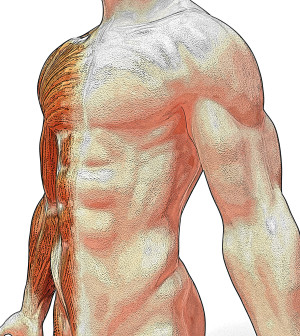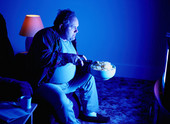- How Daily Prunes Can Influence Cholesterol and Inflammation
- When to Take B12 for Better Absorption and Energy
- Epsom Salts: Health Benefits and Uses
- See What Saffron Can Do for Sleep and Heart Health
- 6 Common Mistakes to Avoid Before Your Physical
- Can Sweating Really Help You Beat a Cold?
- Strengthening Your Relationship: Practical Strategies
- Skip Storing This Everyday Product in the Fridge Door
- Green Tea + B3 Pairing May Boost Brain Health
- Navigating Your Midlife Crisis: Embracing New Possibilities
Want to Stay Slim? Keep Food Out of Sight


With food, seeing it is eating it, a new study suggests.
People who keep food in plain sight around the house are more likely to be obese, researchers report, while low self-esteem is another risk factor.
“Self-esteem is important because when adults don’t feel good about themselves, there may be less incentive for implementing behavioral changes in the home environment,” study author Charles Emery, a professor of psychology at Ohio State, said in a university news release.
The study, published April 28 in the International Journal of Obesity, involved 100 volunteers aged 20 to 78. Of these participants, half were obese and the other half were normal weight.
Researchers completed a two-hour home visit with each participant. During this time, they asked each person about eating habits and examined where food was stored in the home, along with the home’s layout. For instance, the researchers measured the distance between the person’s favorite spot and food storage. They also considered any stairs or doors that might block access to food.
Each volunteer also completed a psychological survey. Two weeks after the home visit, researchers followed up with each participant to evaluate the food they bought and their level of physical activity.
The investigators found that obese participants tended to keep food out in the open throughout the house. They also ate more sugar and less healthy foods than those who weren’t obese. Although everyone spent about the same amount of money on food and ate around the same number of calories, those who were a normal weight spent less money on fast food.
“The amount of food in the homes was similar, but in the homes of obese individuals, food was distributed in more locations outside the kitchen,” said Emery. “That speaks to the environment being arranged in a way that may make it harder to avoid eating food. That has not been clearly documented before.”
The obese participants also reported more concern about having sufficient access to food. These people also said avoiding food was more difficult when they were distressed or in situations where eating is socially acceptable.
“This may reflect a greater preoccupation with food, and that is also important. If food is something you’re thinking about a lot, it potentially becomes a source of stress. And yet, it’s something hard not to think about,” Emery said. “You can’t just stop eating, but ideally you can change the way you eat and, to some degree, change the way you’re thinking about eating.”
In addition, low self-esteem and symptoms of depression were more often reported among the obese participants.
Although having food available outside the kitchen and low self-esteem are risk factors for obesity, they do not cause weight problems, the study authors pointed out.
“We’re painting a detailed picture of the home environment that two different groups of people have created. Whether that environment contributed to obesity or obesity led to the environment, we don’t know,” said Emery. “I do think the home environment is a really important place to focus on since that’s where most people spend a majority of their time.”
More information
The U.S. National Institute of Diabetes and Digestive and Kidney Diseases provides facts and statistics on obesity.
Source: HealthDay
Copyright © 2026 HealthDay. All rights reserved.










